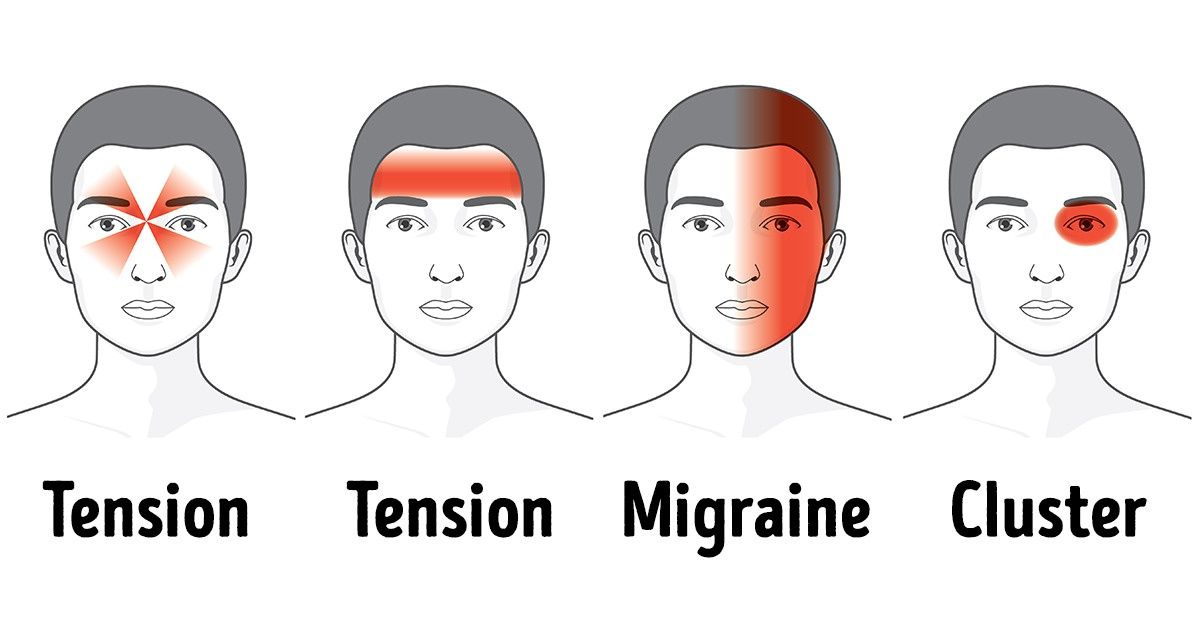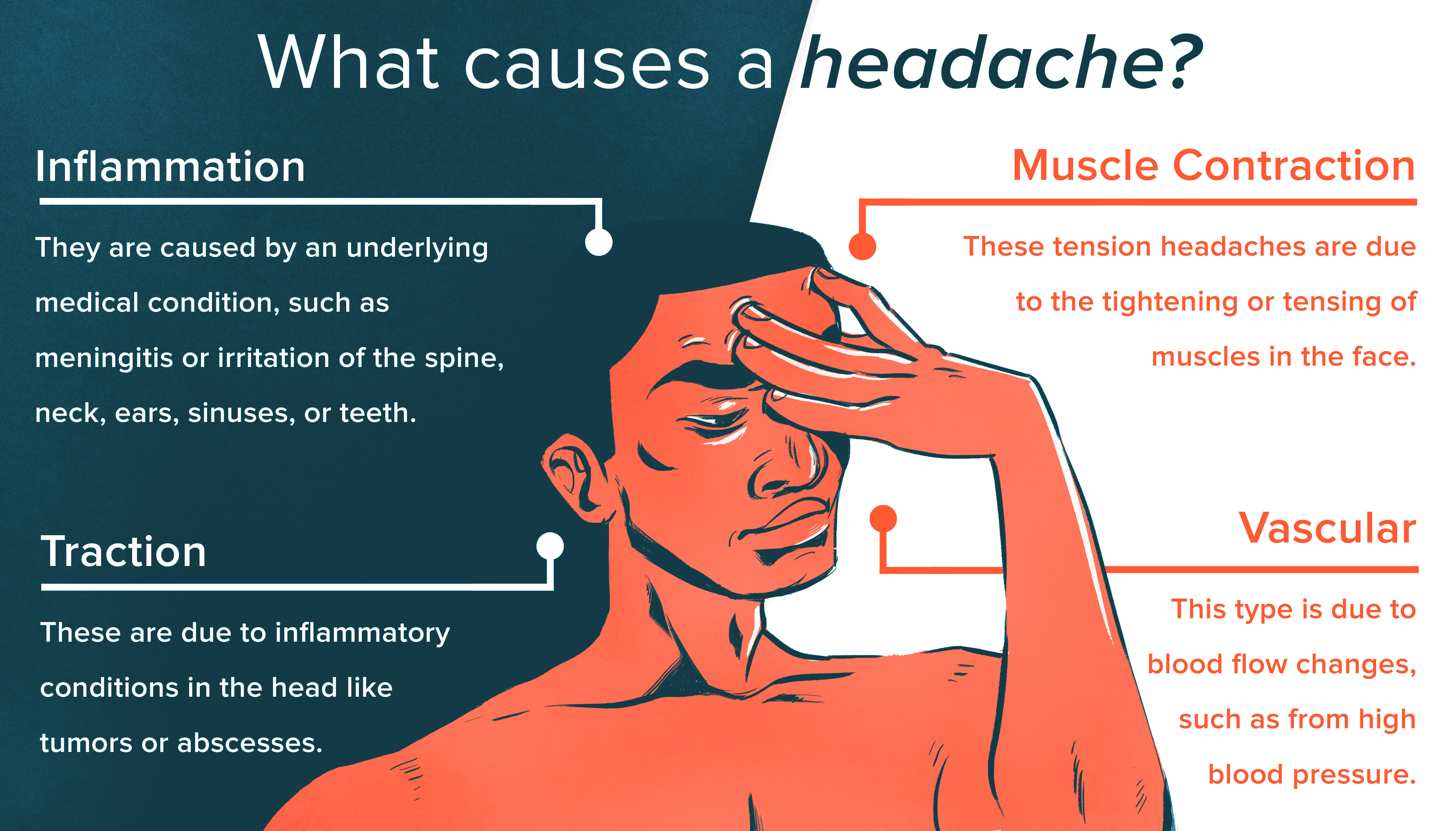
Heres how to reduce tension headaches by getting rid of stress. For example occipital neuralgia nerve pain may cause headaches felt on the top back and sides of the head.

For example occipital neuralgia nerve pain may cause headaches felt on the top back and sides of the head.
Head pain causes. A primary headache is caused by overactivity of or problems with pain-sensitive structures in your head. A primary headache isnt a symptom of an underlying disease. Chemical activity in your brain the nerves or blood vessels surrounding your skull or the muscles of your head and neck or some combination of these factors can play a role in.
Types and causes of common headaches. The most common types of headaches are tension and migraine headaches. Tension headaches strike when the muscles in the head and neck tighten.
Migraines come on when supersensitive nerve endings in the brain create pain. These are symptoms of underlying medical conditions. The cause of a secondary headache may be.
Systemic conditions such as an infection. Other causes include neck or back strain due to poor posture. Your environment including secondhand tobacco smoke strong smells from household.
A cervicogenic headache will always start as pain in back of head at base of skull. It is almost always caused by neck stress such as a damaged disk or an injury. Eventually the pain will spread possibly to the top of the head and in severe cases cause blurred vision dizziness and.
A tension headache is generally a diffuse mild to moderate pain in your head thats often described as feeling like a tight band around your head. A tension headache tension-type headache is the most common type of headache and yet its causes arent well-understood. Treatments for tension headaches are available.
Headaches are a common cause of head pain. You can feel the pain from a headache on one or both sides of your head. Headache pain comes on slowly or.
Brief stabs of pain are common in people with Cervicogenic Headache. Trigeminal Neuralgia can cause sharp head pains involving the lower part of the face. This sudden stabbing or shooting pain affects your cheek or jaw.
Touch or movement trigger this intense sharp head pain. The head is one of the most common sites of pain in the body. Headache may arise spontaneously or may be associated with activity or exercise.
It may have an acute onset or it may be chronic in nature with or without episodes of increasing severity. Headache is often associated with nausea and vomiting. For example occipital neuralgia nerve pain may cause headaches felt on the top back and sides of the head.
Also refer to facial pain spine for information on facial pain as a result of nerve compression. Poor posture can also cause pain in the back of your head and neck. Poor body positioning creates tension in your back shoulders and neck.
And that tension may cause a headache. Pain at the back of the head or neck which intensifies on movement. It is caused by inflammation of the blood vessels of the head or bony changes in the structures of the neck.
The cause of pain is unknown. What can cause headaches. The most common reasons are.
Having a cold or the flu. Drinking too much alcohol. Not eating regular meals.
Not drinking enough fluids dehydration taking too many painkillers. Women having their period or menopause. But the blood vessels in the head and neck can signal pain as can the tissues that surround the brain and some major nerves that originate in the brain.
The scalp sinuses teeth and muscles and joints of the neck can also cause head pain. When to worry about a headache. Tension headache causes.
How to reduce tension-type headaches HEADACHES can be debilitating and leave you bed-bound for days at a time. Heres how to reduce tension headaches by getting rid of stress. A migraine is a one-sided headache that causes intense pain and throbbing due to blood vessels dilating in the brain.
The exact reason for new-onset migraine headache is not known but a number of causes are being studied.